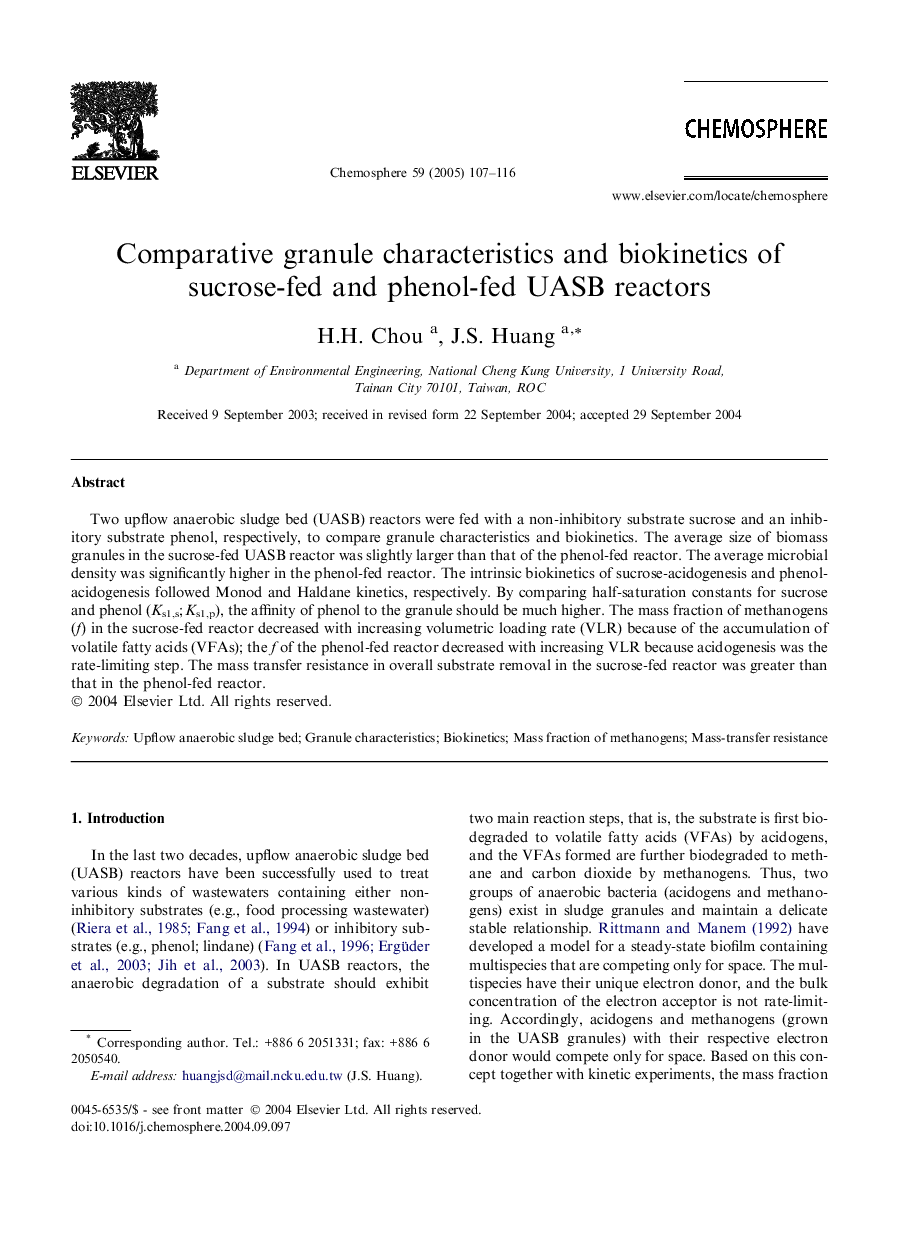| Article ID | Journal | Published Year | Pages | File Type |
|---|---|---|---|---|
| 9452051 | Chemosphere | 2005 | 10 Pages |
Abstract
Two upflow anaerobic sludge bed (UASB) reactors were fed with a non-inhibitory substrate sucrose and an inhibitory substrate phenol, respectively, to compare granule characteristics and biokinetics. The average size of biomass granules in the sucrose-fed UASB reactor was slightly larger than that of the phenol-fed reactor. The average microbial density was significantly higher in the phenol-fed reactor. The intrinsic biokinetics of sucrose-acidogenesis and phenol-acidogenesis followed Monod and Haldane kinetics, respectively. By comparing half-saturation constants for sucrose and phenol (Ks1,s;Â Ks1,p), the affinity of phenol to the granule should be much higher. The mass fraction of methanogens (f) in the sucrose-fed reactor decreased with increasing volumetric loading rate (VLR) because of the accumulation of volatile fatty acids (VFAs); the f of the phenol-fed reactor decreased with increasing VLR because acidogenesis was the rate-limiting step. The mass transfer resistance in overall substrate removal in the sucrose-fed reactor was greater than that in the phenol-fed reactor.
Related Topics
Life Sciences
Environmental Science
Environmental Chemistry
Authors
H.H. Chou, J.S. Huang,
